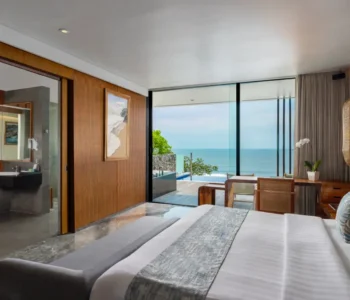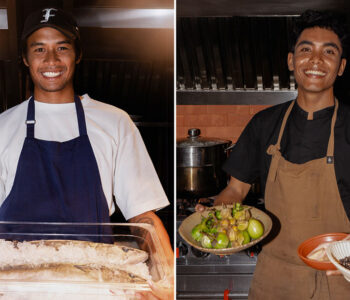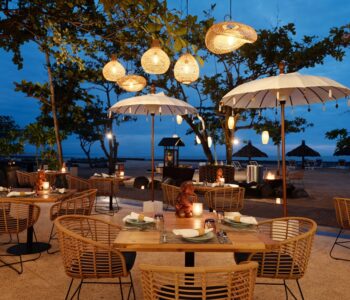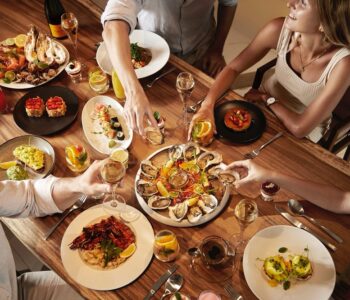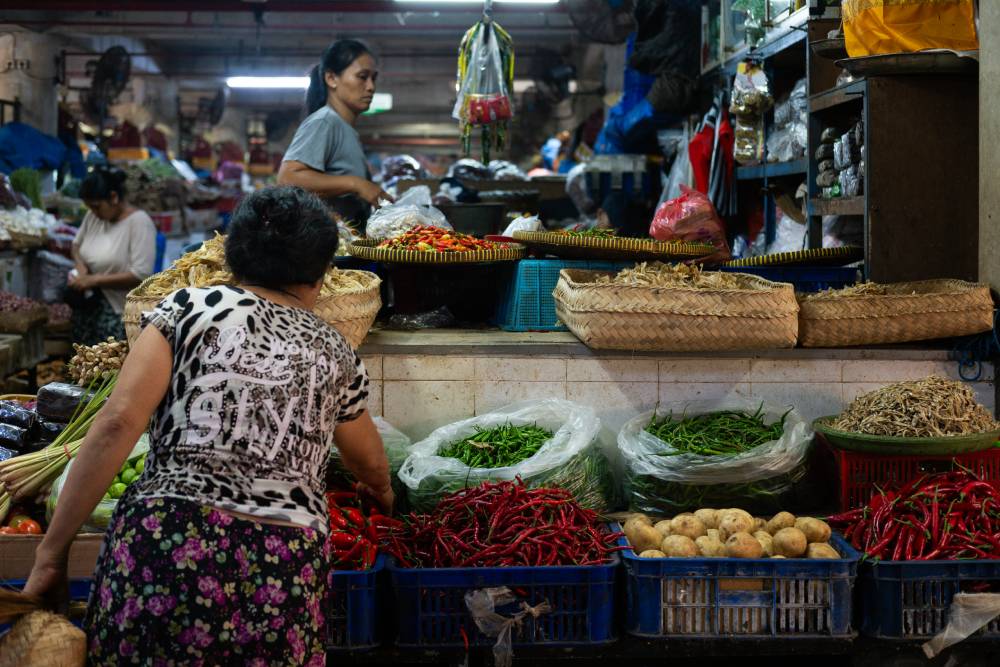
Take a peek into Bali’s local food markets, where chaos and colour, intense smells, sights and sounds provide an authentic experience of the food culture. A journey into a Bali market is the best way immerse oneself into everyday life on the island!
Markets anywhere in the world are great places to catch a glimpse of what everyday life is like; where the veils of tourism are pulled back, and the real, unpolished scenes of local living can be seen. This is certainly the case here in Bali, where the local pasar, or market, continues to be a mainstay for island residents: everyday wares, be it groceries or daily offerings, are acquired from the various markets that serve the neighbourhood or local area.
Bali’s markets, especially food markets, are certainly not for the squeamish. Most are chaotic, messy, smelly, hot and by modern standards, unhygienic. But they are simultaneously treasure troves for the curious, seeing how goods are displayed, bought and sold, to the palpable buzz of these busy little locales. Here we take you to three of South Bali’s most prominent food markets, each offering a different atmosphere and experience.
Kedonganan Fish Market

If Jimbaran Bay is where one goes to enjoy local seafood, then Kedonganan Bay is where all that seafood comes from. In fact, many of South Bali’s restaurants will source their seafood form this market, where every morning local fishermen will shore up on the beach with the latest fresh catch.
Your nose will tell you when you’ve arrived at Kedonganan Fish Market, with the acrid scent of the sea heavy in the air. The beachfront is packed with jukung catamarans, busily parked on the sand like motorbikes in a mall. The market itself is made up of two areas –an outdoor and indoor market– each providing its own atmosphere. Outside, just off the beachfront, crowds squelch around makeshift, parasol-shaded stalls; an array of fish and seafood displayed in iced trays in the open for buyers to inspect, inquire and haggle. This is where domestic households or warungs (local eateries) normally buy their supplies, purchasing the smaller skipjack, sardines and snappers, normally sold whole by the kilo, with some vendors offering chopped parts for larger fish.
One covered area, devoid of any stalls, is in fact where the biggest catches are hauled in and weighed, not unlike one would find at Tokyo’s Toyosu fish market. This happens very early in the morning, around 4am, and much of these will go to wholesale buyers. Trucks will come in the morning to transport fish to inland markets, even to factories in Java, and in some cases sent abroad for export, one local shares.
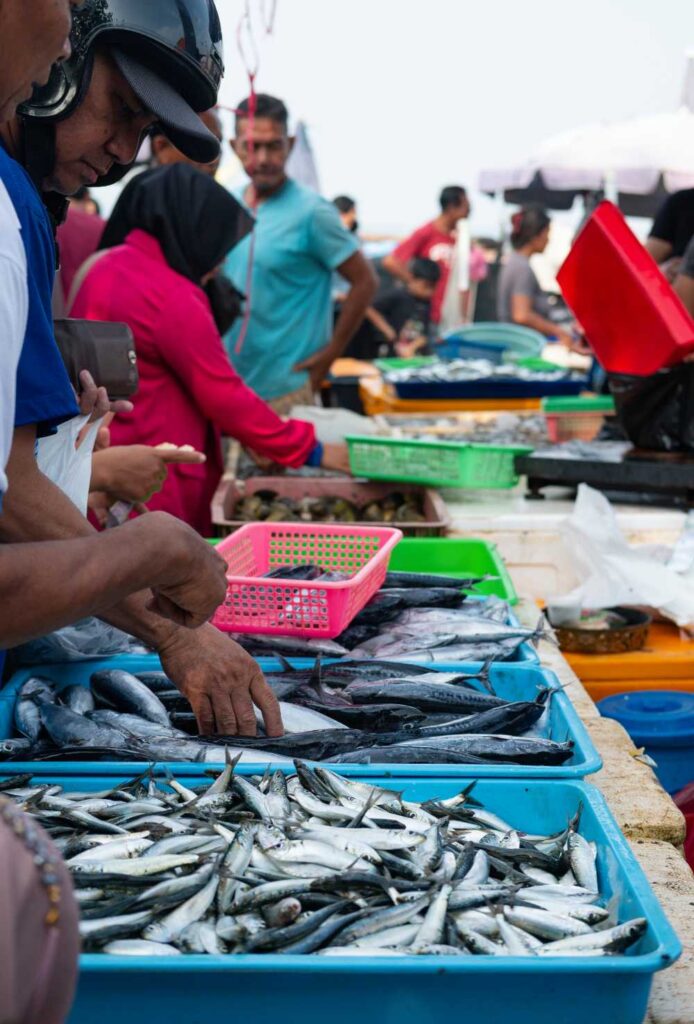
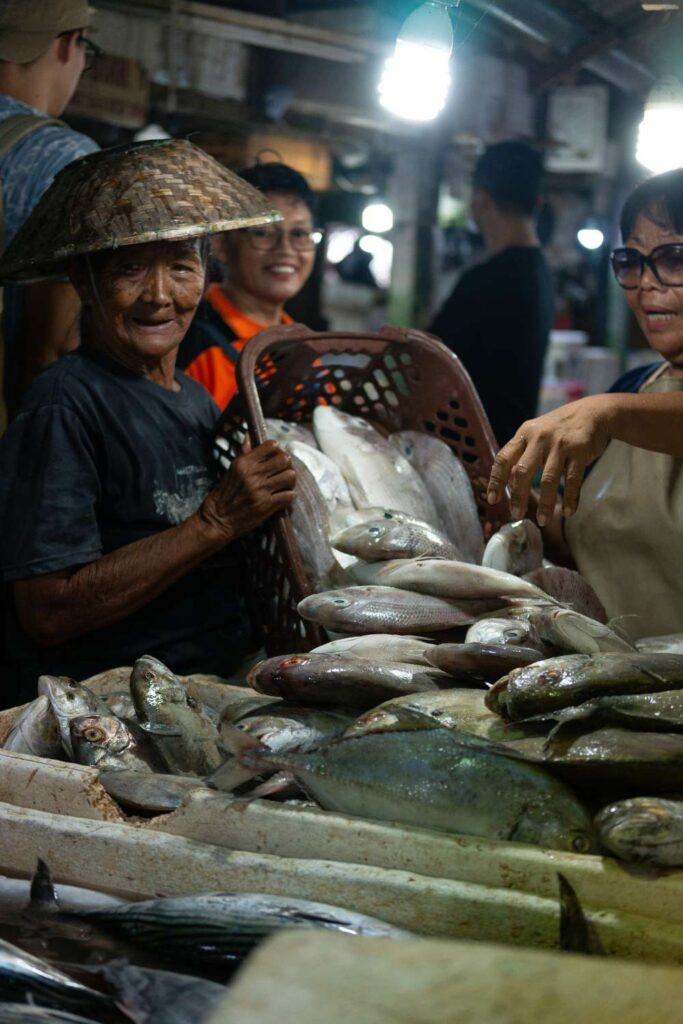
The indoor market is slightly more organised, split into three broad sections of large catch, smaller catch and other seafood (shellfish, crustaceans etc) – left to right respectively, with the beach behind us. The range of fish here is impressive: tuna and trevally, grouper and snapper, mahi-mahi and mackerel. How can you tell if they’re fresh? One tip given to me was to check that the eyes are clear and the gills are pink or red. Some imported fish can be found here as well, including salmon. When it comes to other seafood, there’s a rich selection: mussels, clams, scallop and even oysters; octopus, squid and cuttlefish; crab and lobster, shrimps and tiger prawns. bbuyers are most certainly allowed to touch and feel to check for freshness. Yes, Kedonganan is a feast for the senses.
Typically open from 6am to 6pm: visit early in the morning for a more lively experience, and fresher seafood. Make sure to bring cash if you’re planning to purchase.
Pasar Badung, Market by Day
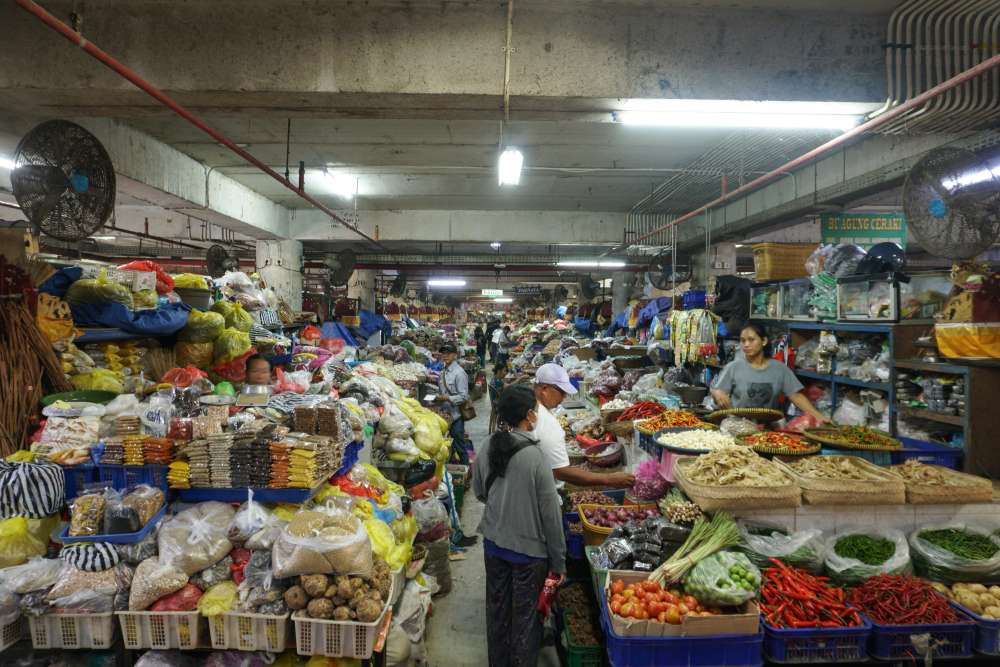
This is where the daily needs of local Denpasar society are found and met, predominantly food needs. It’s a window into everyday life, a bustling, dizzying maze of stalsl like that found in many Southeast Asian countries. Pasar Badung is found on the historic merchant’s row of Jalan Gajah Mada. This road, originally built by Dutch administrators in the 30s, saw Chinese and Indian traders setting up shop around the main market area, with Gajah Mada still retaining an atmosphere of a bygone merchant era.
Pasar Badung today is a four-storey building, with stalls and sellers found indoors. But this same site is where the traditional market has been for centuries. In fact, the very name Denpasar comes from north (den) of the market (pasar); a name given to the new puri (royal compound) established in 1788 with the rise of the Kingdom of Badung: Puri Denpasar (Palace North of the Market). So, the market certainly predates that!
The multistorey building that stands now was built in 2019 after the market suffered a huge fire, and whilst its exterior may look modern enough, inside, Pasar Badung is as traditional as can be. Entering from the ground floor, the first section is packed with herbs and spices: trays of fresh ginger, shallots, onion, lemongrass, terasi (shrimp paste) and of course an assortment of chillis; stacks of dried spice packets, and dried fish – these are all the flavour makers! Towards the back of the ground floor is the wet market, again, not for the squeamish. Each row of the wet market services different meats, from poultry, to fish, to beef and finally at the very back, pork.
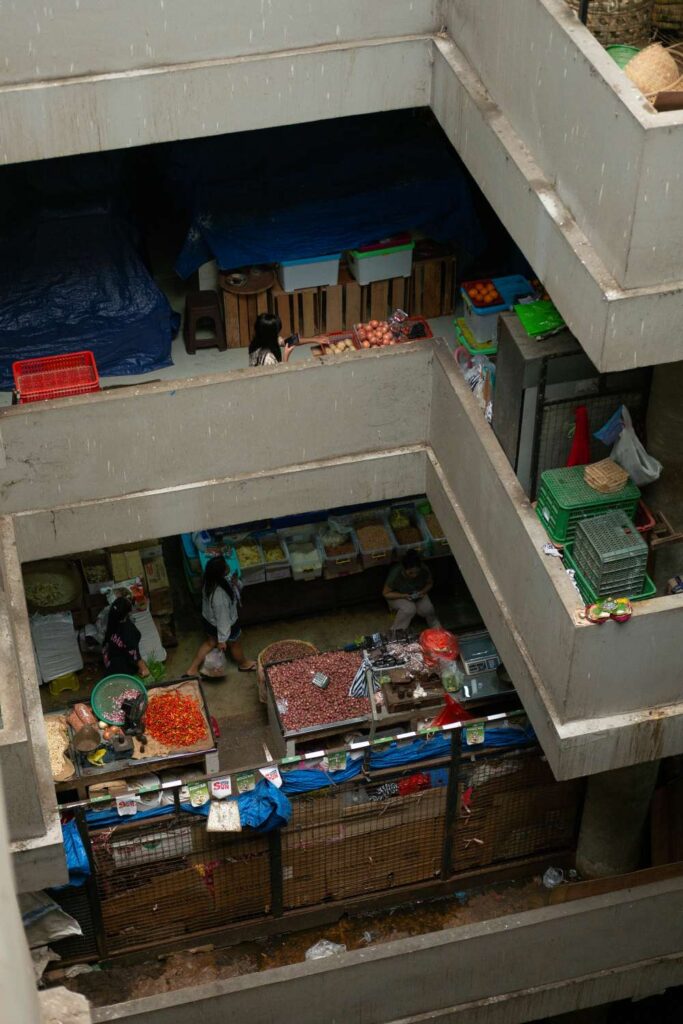
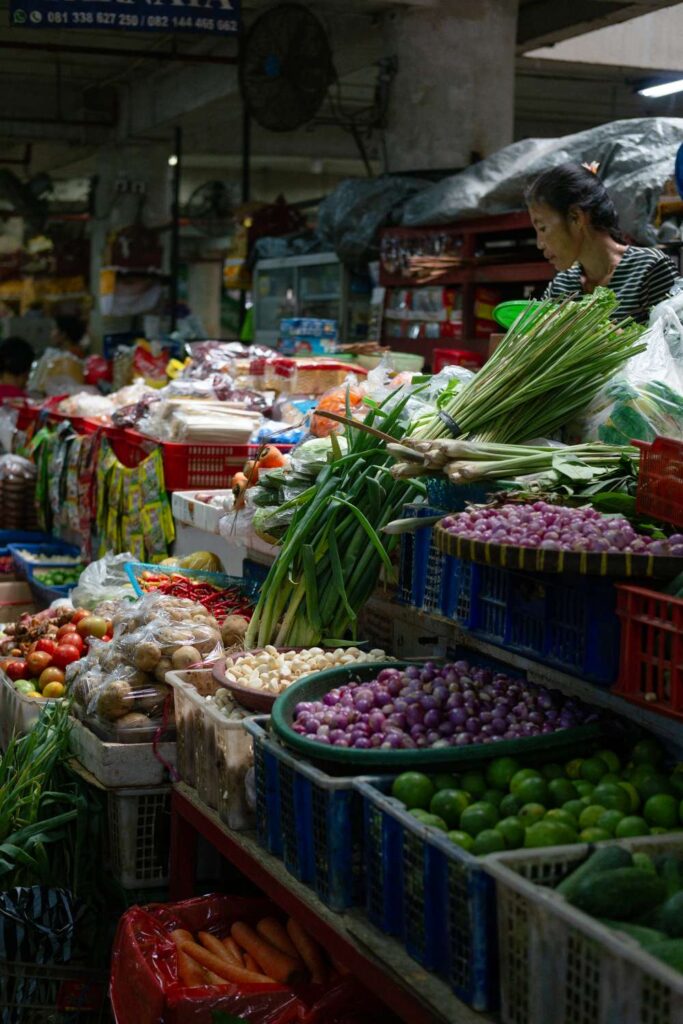
On the first floor, one will find fresh fruits and vegetables. A colourful display of stalls over pouring with produce, with ladies balancing goods in bamboo baskets upon their heads between the stalls. At the back of the first floor is also where one will find goods for ceremonial needs, from rolls of banana leaf, strips of palm leaf, incense, flowers, and indeed ready-made offerings as well.
The second floor is temptation station, where dried goods, fried goods and snacks are sold in bulk. Peanuts, market snacks, cookies and a colourful array of pre-fried kerupuk (crackers) are laid out for buyers to stock up their pantries. Finally, the top floor is reserved for traditional or ritual attire and clothing, and some nick-nack stores.
The stalls in the main Pasar Badung building are typically open from 5am to 5pm. After 5pm, the night market begins outside, but it’s better to head over to the neighbouring Kumbasari Market for this!
Pasar Malam Kumbasari, Market by Night
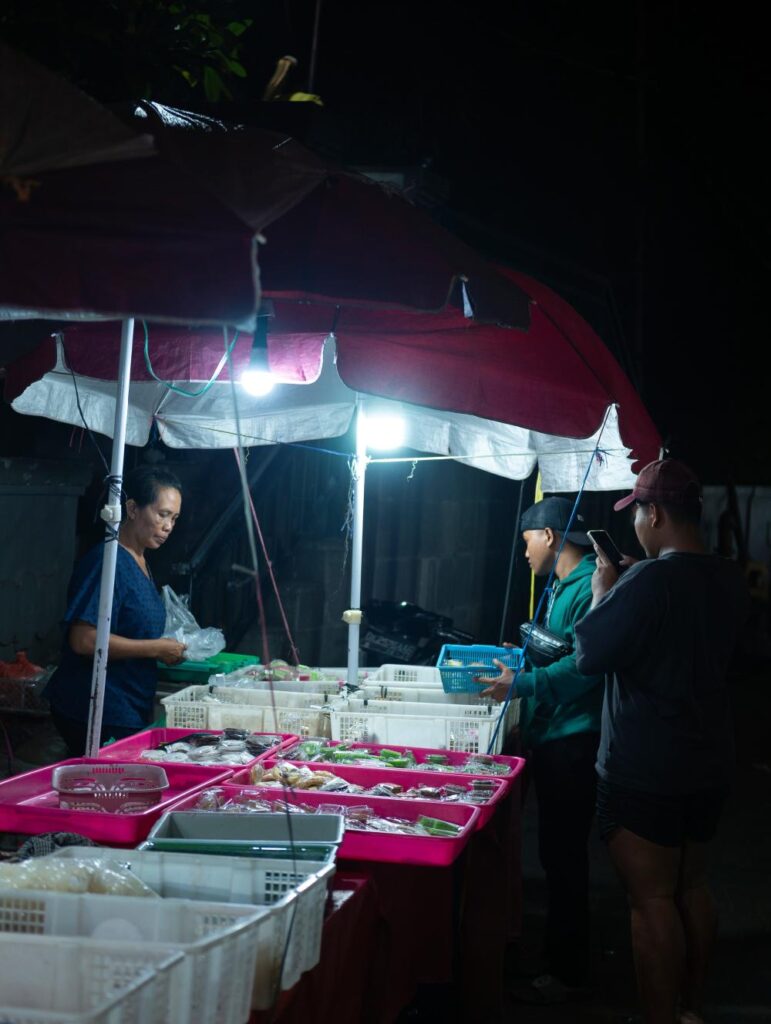
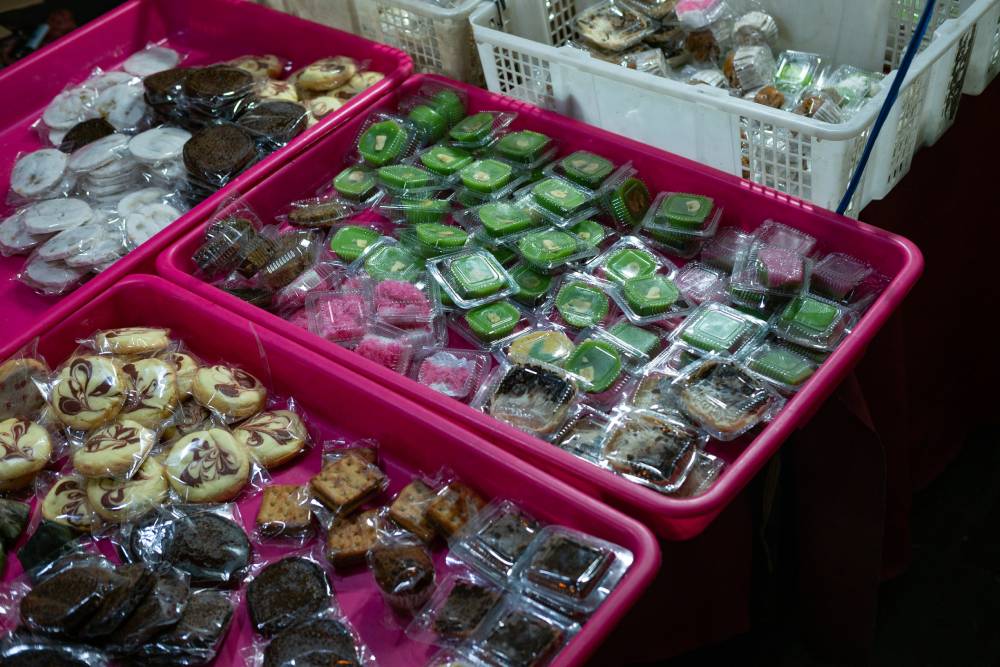
Across the river from Pasar Badung is Pasar Kumbasari, a wholesale arts market filled with souvenirs, nick-nacks, paintings and more. However, at night, the streets around and beneath this become a bustling night market, open until the wee hours of the morning!
What is different about night markets in Bali? This is typically where you will find jajanan pasar (market snacks), also known as jaje Bali. These can be found at the first stalls by the river at Kumbasari. Favourites include dadar gulung (pandan pancakes rolled with coconut and palm sugar), klepon (pandan dough balls with a coconut-palm sugar filling), wajik (glutinous rice cakes cooked with palm sugar and coconut milk), nagasari (sweet potato steamed in banana leaf), just to name a few. With snacks in hand, stroll through the night market –which sells many of the same goods from meats to fish to fruits and veg and ceremony requirements. From a more pronounced experience of the latter, walk down Jalan Gunung Kawi road by Pasar Badung for rows of ladies selling offering needs on the street.
Whilst these are the most prominent markets in Bali, you’ll find pasar all over the island! From Ubud you can visit Pasar Payangan (north) or Pasar Malam Sukawati, or venture to Pasar Senggol Gianyar for street food. Sanur’s Sindhu Night Market is another destination, or Pasar Kreneng, also in Denpasar. Or, by all means, have fun finding your own pasar to explore!



